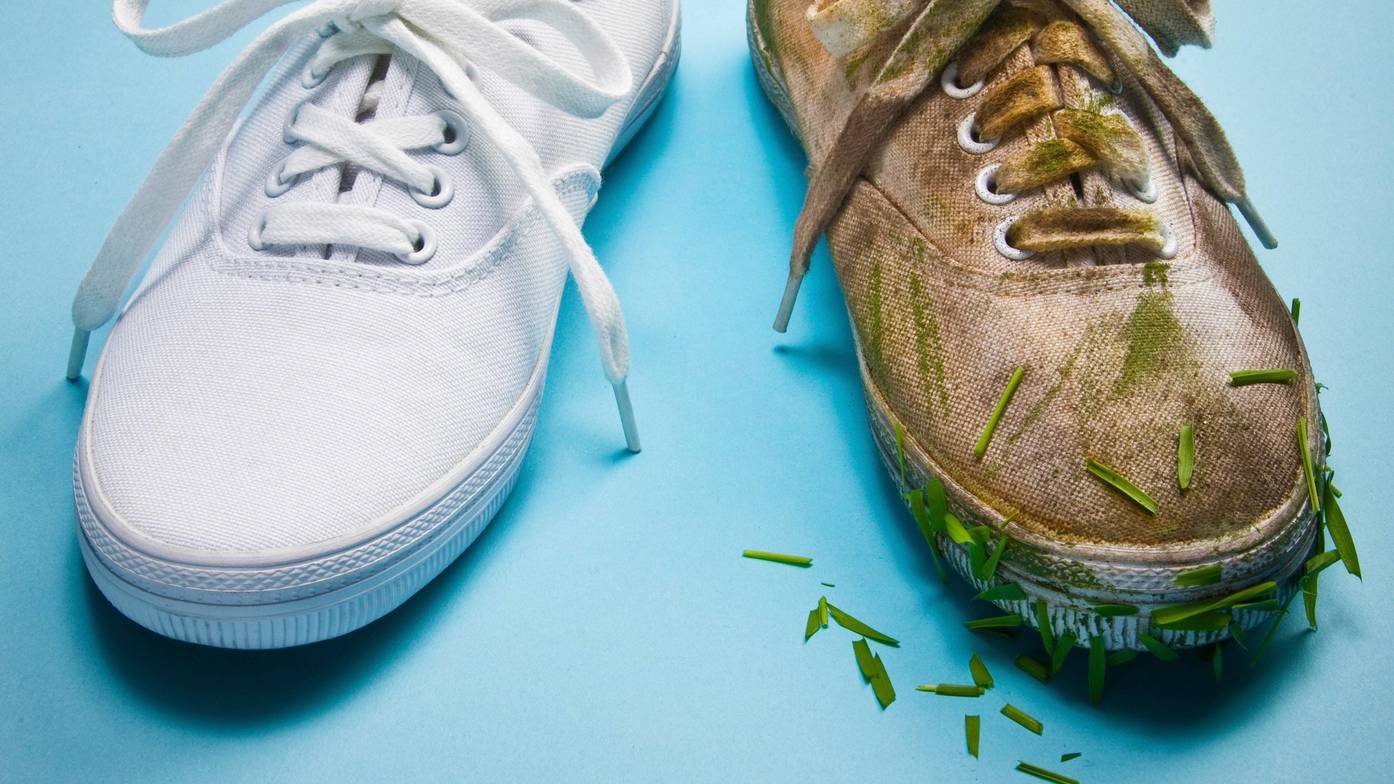
With the latest dumping of snow we've just received, it may be hard to believe that spring is around the corner. BUT, I'm determined to keep reminding everyone around me that it is! With that in mind, I'm back in the groove of getting all my favourite sandals ready for their time to shine, and I wanted to take the opportunity to show how easy it is.
Starting with my Dansko Season sandals, you can see that they were in pretty rough shape. As someone who works in the clinic all day, I wear these puppies for 8 hours at a time at least twice a week (if not more) while doing laps around the building all day. Also, I haven't cleaned them since this time last year, so they are well loved and overdue for a cleaning. Finally, the instructions below are not suitable for cleaning leather footbeds, only cloth or suede.
Step One

The first step here is to go at 'em with a stiff bristled brush. I use a specific Suede/Nubuck brush (see photo) that has wire and plastic bristles, but you can use anything from around the house, even a toothbrush (though it may take a bit longer). Dry brushing the shoes to start off with is essential because it lifts all the caked-on dust and grime, before adding any liquids and making it extra messy. Fair warning, you may want to do this part over a sink!
/mgl-integratedhealthcentre-ca/21c133a6-2a1e-4471-ca51-b4e7941a791a.jpeg)
Be cautious when dry brushing suede not to spend too much time in one area; excessively brushing one area can cause too much wear and can weaken the material. This will be clearly visible. This is not a concern if the material is a micro-fibre (most Vionic or Dansko styles).
As you can see in the photo (right), these shoes are ideal as they open up completely to make the cleaning process easier. In the centre of the arch, you can see a lighter patch of tan marks where I started to use the brush. Do this across the entire footbed of both shoes.
Step Two
Once the top layer of dirt is removed with the brush, this is when the cleaner comes in. I used the Tana Suede & Nubuck cleaner, but any footbed cleaner will do. Apply the spray generously, and start again with the brush to get a nice lather going.
If you're using a suede/nubuck brush that has the rubber fingers on it (like the one imaged above), use can use this side instead of the brush fibres to help lift out any more gunk. Have a well wrung out damp cloth handy to wipe away the excess liquid, and clean off the brush as needed to reduced dirt build-up. Continue to spray, scrub, and wipe with a cloth until the darkened patterns are mostly gone. Below, you can see the footbeds are darker in colour than they were when brand new, but the majority of the foot marks are gone. This is what we're aiming for.
/mgl-integratedhealthcentre-ca/9eea7679-7b68-4b1c-b348-21417d603e62.jpeg)
Step Three
The hard work is over! Now, simply leave them overnight to dry. Below, you can see the image of my sandals after drying. Hardly recognizable! I finished these up with one more good dry brushing to ensure the micro-fibre material was soft and fluffy to touch.
After drying, if you feel that there is more dust and dirt that could be removed, feel free to repeat Step Two until you're happy with the results.
Step four
If the straps of your sandals are leather (like mine are), I use a beeswax conditioner to hydrate the material; you can also use a mink oil or other leather cream. This again brings moisture back to the leather and increases the longevity.
Voila!
Good as new! The whole process (not including the over-night drying) only took about 20-30 minutes.
/mgl-integratedhealthcentre-ca/d6cdc80c-4bc3-42b7-d84a-fdf898e1f50f.jpeg)
Optional:
I finished up the process by adding a few drops of orange essential oil to the material. With it's antibacterial and anti-fungal properties, this is my way of trying to make this lovely "new shoe look" last as long as possible and keep my shoes smelling fresh. Tea-tree oil also works great for this purpose.
/mgl-integratedhealthcentre-ca/13737286-8d07-4276-eae1-1fa8216c85ac.png)
Author's Note: Working with Cork
Every time I make a post regarding cleaning footbeds, people always come flocking with, "But what about my Birkenstocks?! I want them to be this sparkly clean!"
Unfortunately, because the insole of the shoe in Birkenstocks (and Mephistos) are made of CORK, that brings some limitations. Water and cork don't work well together; when cork absorbs water it expands, then shrinks again once it dries out, and the structural integrity of the shoe is affected. Water damage to Birks most often shows with cracking around the lip. This is minimized if you use a sealant like Cork Renew, but soaking the entire surface will still cause some damage.
But, fear not, there are still some ways to beautify your Birks:
1. Just like above, start with a good dry brushing to lift dust out of the suede footbed. To repeat: Be cautious when dry brushing suede not to spend too much time in one area; excessively brushing one area can cause too much wear and can weaken the material. This will be clearly visible. This is not a concern if the material is a micro-fibre (most Vionic or Dansko styles).
1. Just like above, start with a good dry brushing to lift dust out of the suede footbed. To repeat: Be cautious when dry brushing suede not to spend too much time in one area; excessively brushing one area can cause too much wear and can weaken the material. This will be clearly visible. This is not a concern if the material is a micro-fibre (most Vionic or Dansko styles).
3. Remove the majority of paste with a dry paper towel, then wipe the remainder away using a well wrung out damp cloth.
4. Let dry fully, out of direct sunlight (as direct sunlight and heat will encourage the cork and/or leather drying out) and brush as needed to restore the nap.
For best results in keeping your cork footbed shoe looking new, give it a dry brushing as often as once a month to keep dirt from building up.
Questions?
Comes see us in the Footwear and Nutrition store at IHC, and we can give you more shoe care tips.





